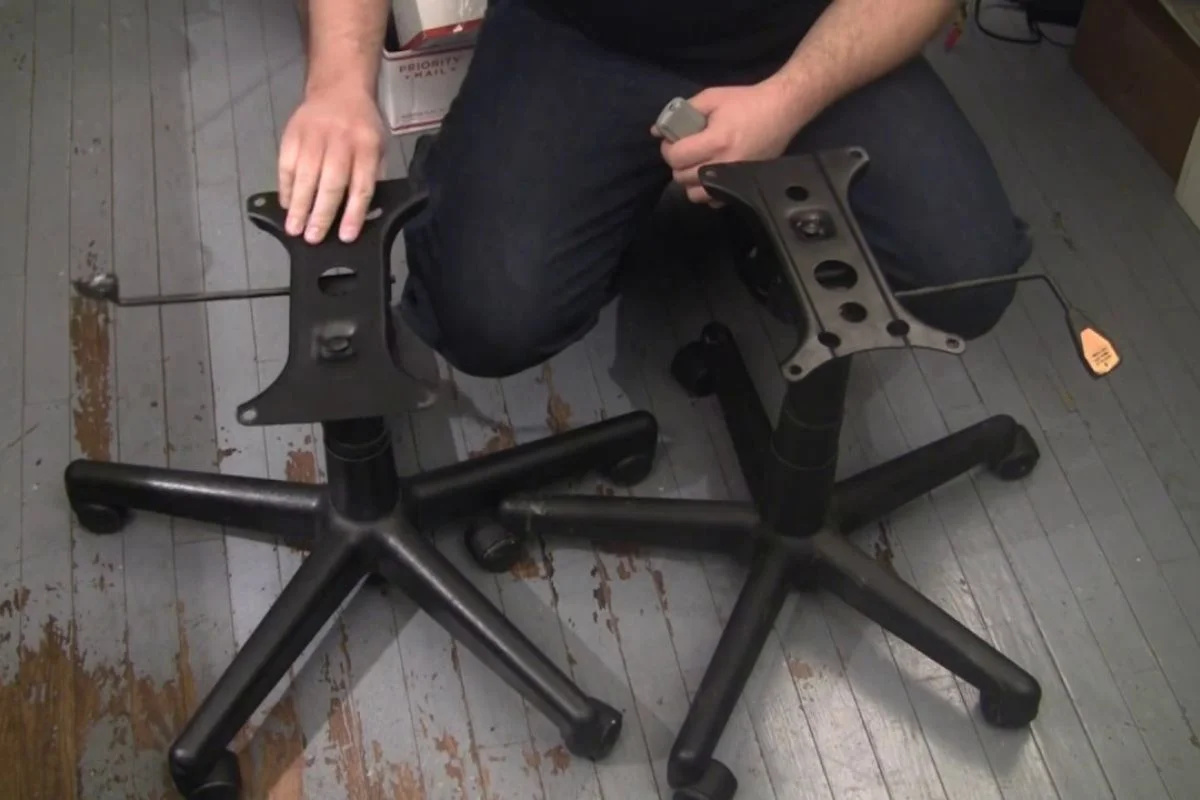Chairs play a vital role in our everyday lives, providing comfort and support as we sit, dine, work, and relax. However, like any piece of furniture, chairs are susceptible to wear and tear over time. From wobbly legs and loose joints to torn upholstery and scratches, chairs can develop a range of issues that compromise their functionality and aesthetics.
But fear not! With the right knowledge and techniques, you can tackle chair repairing like a pro, breathing new life into your favorite seating pieces. In this comprehensive guide, we’ll explore a variety of tips and techniques for repairing chairs, covering everything from minor touch-ups to major structural fixes.
Whether you’re dealing with a wobbly dining chair, a torn office chair, or a scratched wooden armchair, this guide has you covered. Get ready to roll up your sleeves and learn how to revive your chairs and extend their lifespan, saving you time and money in the process.
So, whether you’re a seasoned DIY enthusiast or a novice looking to tackle your first chair repair project, this guide is here to help. Let’s dive in and discover the complete secrets to chair repairing.
Importance of Chair Repairing for Prolonging Chair Lifespan
Chairs are essential pieces of furniture that serve multiple purposes in our daily lives, from providing a place to sit and relax to supporting us during meals, work, and social gatherings. However, like any frequently used item, chairs are susceptible to wear and tear over time. From loose joints and wobbly legs to torn upholstery and scratches, chairs can develop a variety of issues that compromise their functionality and appearance.
Chair repairing is crucial for prolonging the lifespan of your chairs and maximizing their utility. By addressing minor issues promptly and conducting regular maintenance, you can prevent small problems from escalating into larger, more costly repairs or the need for premature replacement.
Repairing chairs offers several key benefits for homeowners:
Cost-Effectiveness: Repairing minor issues is often more cost-effective than replacing the entire chair. By investing in chair repairing, you can extend the lifespan of your furniture and avoid the expense of purchasing new chairs.
Sustainability: Repairing and refurbishing chairs reduces waste and contributes to sustainability efforts by minimizing the need for new furniture production. By extending the lifespan of your chairs through repair, you can reduce your environmental impact and promote eco-friendly living practices.
Preservation of Sentimental Value: Many chairs hold sentimental value for homeowners, whether they’ve been passed down through generations or are associated with special memories and experiences. Repairing and maintaining your chairs allows you to preserve their sentimental value and continue enjoying their presence in your home for years to come.
Enhanced Comfort and Functionality: Addressing issues such as loose joints or torn upholstery through chair repairing can improve the comfort and functionality of your furniture. By restoring their structural integrity and addressing wear and tear, you can ensure that your chairs remain comfortable and functional for daily use.
Benefits of DIY Chair Repairing vs. Professional Services
When it comes to chair repairing, homeowners often face the decision of whether to tackle the repairs themselves or enlist the help of professional services. Both options have their advantages, and understanding the benefits of each can help you make an informed decision. Here are the benefits of DIY chair repairing compared to professional services:
Cost-Effectiveness:
DIY Chair Repairing: One of the primary advantages of DIY chair repairing is its cost-effectiveness. By repairing chairs yourself, you can save money on labor costs and potentially expensive professional services.
Professional Services: While professional services may offer expertise and convenience, they often come with higher costs. Hiring a professional chair repair technician can be more expensive than purchasing materials and tools for DIY repairs.
Control and Flexibility:
DIY Chair Repairing: Repairing chairs yourself gives you full control over the process, allowing you to choose the materials, techniques, and timeline that best suit your needs. Additionally, DIY repairs offer flexibility, as you can work on the repairs at your own pace and schedule.
Professional Services: While professional services offer expertise and efficiency, they may limit your control over the repair process. You’ll need to rely on the availability and schedule of the repair technician, and you may have less input into the materials and methods used for the repairs.
Learning and Skill Development:
DIY Chair Repairing: Taking on DIY chair repairs provides an opportunity for learning and skill development. You can gain valuable experience and knowledge by tackling repairs yourself, which can be applied to future projects and home maintenance tasks.
Professional Services: While professional services offer expertise and quality assurance, they may not provide the same learning opportunities as DIY repairs. If you’re interested in developing your skills and knowledge in chair repairing, DIY projects can be a valuable learning experience.
Personal Satisfaction:
DIY Chair Repairing: Successfully completing a DIY chair repair can bring a sense of accomplishment and personal satisfaction. Knowing that you were able to restore and improve your chairs with your own hands can be immensely rewarding.
Professional Services: While professional services offer convenience and peace of mind, they may not provide the same level of personal satisfaction as DIY repairs. You may miss out on the sense of pride that comes from completing a repair yourself.
Budget-Friendly Solutions for Chair Repairing
Repairing chairs doesn’t have to be a costly endeavor. There are many budget-friendly solutions and DIY techniques that can help you restore your chairs without breaking the bank. Here are some budget-friendly solutions for chair repairing:
DIY Upholstery Repair: If your chair’s upholstery is torn or damaged, consider repairing it yourself using patching kits or fabric glue. You can find affordable upholstery repair kits at hardware stores or online, allowing you to fix minor tears and holes without the need for professional assistance.
Refinishing Wooden Chairs: For wooden chairs with scratches or worn finishes, refinishing them can breathe new life into the furniture. Sanding down the surface and applying a fresh coat of paint or wood stain can restore the chair’s appearance at a fraction of the cost of purchasing new furniture.
Replacing Missing Parts: If your chair is missing parts such as screws, bolts, or decorative elements, consider sourcing replacements from hardware stores or online suppliers. Many hardware stores offer a variety of affordable replacement parts that can help you restore your chair’s functionality and aesthetics.
Upcycling and Repurposing: Get creative with upcycling and repurposing materials to repair your chairs. For example, you can use leftover fabric scraps or old clothing to create patches for upholstery repairs, or repurpose items like buttons, beads, or decorative trim to embellish and enhance the appearance of your chairs.
Simple Structural Repairs: Many common chair issues, such as loose joints or wobbly legs, can be addressed with basic tools and materials. Tightening screws, applying wood glue to loose joints, or adding reinforcement brackets can often resolve these issues without the need for professional assistance.
Preventative Maintenance: Investing in preventative maintenance measures can help you avoid costly repairs in the future. Regularly inspect your chairs for signs of wear and tear, and address minor issues promptly before they escalate into more significant problems. Simple tasks like tightening screws, lubricating hinges, and cleaning upholstery can prolong the lifespan of your chairs and save you money on repairs down the line.
Benefits of Hiring a Professional Chair Repair Technician
While DIY chair repairing can be a cost-effective and rewarding option for some homeowners, there are several compelling reasons to consider hiring a professional chair repair technician for more complex or specialized repair needs. Here are the benefits of enlisting the services of a professional:
Expertise and Experience: Professional chair repair technicians have specialized training and expertise in repairing a wide range of chair types, styles, and materials. They possess the knowledge and skills needed to accurately diagnose issues, recommend appropriate repair techniques, and execute repairs with precision and efficiency.
Quality Assurance: By hiring a professional chair repair technician, you can have confidence in the quality of the repairs performed. Professionals use high-quality materials, tools, and techniques to ensure that repairs are done correctly and effectively, resulting in durable and long-lasting solutions.
Customized Solutions: Professional chair repair technicians can provide customized solutions tailored to your specific chair repair needs. Whether your chair requires structural repairs, upholstery restoration, or refinishing, professionals can assess the condition of the chair and recommend the most suitable repair techniques to meet your preferences and budget.
Time and Convenience: Repairing chairs can be time-consuming and labor-intensive, especially for complex or extensive repairs. By hiring a professional chair repair technician, you can save time and effort by outsourcing the work to experienced professionals. This allows you to focus on other priorities while professionals handle the repairs quickly and efficiently.
Access to Specialized Tools and Materials: Professional chair repair technicians have access to specialized tools, equipment, and materials that may not be readily available to homeowners. They use professional-grade products and techniques to achieve superior results, ensuring that your chairs are restored to their original condition.
Warranty and Guarantee: Many professional chair repair services offer warranties or guarantees on their workmanship, providing added peace of mind and protection for homeowners. If any issues arise after the repairs are completed, professional technicians will address them promptly and effectively, ensuring your satisfaction with the results.
Safety and Liability: Repairing chairs involves working with tools, equipment, and materials that can pose safety risks if not used properly. Professional chair repair technicians are trained to follow safety protocols and best practices to minimize the risk of accidents or injuries during the repair process. Additionally, hiring professionals reduces liability for homeowners, as they are responsible for ensuring that repairs are performed safely and correctly.
Factors to Consider When Choosing a Chair Repair Service
When it comes to selecting a chair repair service, there are several important factors to consider to ensure that you choose the right provider for your needs. Here are key factors to keep in mind when evaluating chair repair services:
Experience and Expertise: Look for chair repair services with a proven track record of experience and expertise in the industry. Consider how long the company has been in business, as well as the qualifications and training of their technicians. An experienced and knowledgeable team is more likely to deliver high-quality repairs and satisfactory results.
Range of Services Offered: Assess the range of services offered by the chair repair service to determine if they can address your specific repair needs. Consider whether they specialize in repairing the type of chair you have, whether it’s wooden, upholstered, antique, or modern. Ideally, choose a service provider that offers a comprehensive range of repair solutions to meet your requirements.
Customer Reviews and Testimonials: Take the time to read customer reviews and testimonials to gauge the reputation and reliability of the chair repair service. Look for feedback from past clients regarding the quality of repairs, professionalism of technicians, timeliness of service, and overall customer satisfaction. Positive reviews are a good indication of a reputable and trustworthy service provider.
Cost and Pricing: Request cost estimates or quotes from multiple chair repair services to compare prices and determine the most competitive rates. Be wary of significantly low prices, as they may indicate subpar quality or hidden fees. Instead, prioritize value for money by choosing a service provider that offers transparent pricing and fair rates for their services.
Availability and Scheduling: Consider the availability and scheduling options offered by the chair repair service. Determine whether they can accommodate your preferred timeline for repairs and whether they offer flexible scheduling options, such as evening or weekend appointments. Prompt and convenient service scheduling can minimize disruptions to your schedule and ensure timely repairs.
Location and Service Area: Choose a chair repair service that operates within your local area or service area to minimize travel time and expenses. Verify that the service provider covers your location and inquire about any additional fees for travel or transportation. Opting for a local provider can also facilitate communication and coordination throughout the repair process.
Warranty and Guarantee: Inquire about any warranties or guarantees offered by the chair repair service on their workmanship and repairs. A reputable service provider should stand behind their services and offer assurances that they will address any issues or concerns that arise after the repairs are completed. Verify the terms and conditions of any warranties or guarantees to ensure your satisfaction and peace of mind.
Preventative Maintenance Tips to Keep Your Chairs in Top Condition
Maintaining your chairs in top condition not only preserves their appearance but also extends their lifespan, ensuring years of comfort and functionality. Here are some preventative maintenance tips to help you keep your chairs looking and feeling their best:
Regular Cleaning: Dust, dirt, and spills can accumulate on your chairs over time, leading to staining and deterioration of upholstery or wood finishes. To prevent this, vacuum upholstered chairs regularly using a soft brush attachment to remove surface dust and debris. For wooden chairs, wipe down surfaces with a damp cloth or wood cleaner to remove dirt and grime. Avoid using harsh chemicals or abrasive cleaners that can damage the finish.
Inspect for Damage: Periodically inspect your chairs for signs of damage, such as loose joints, wobbly legs, or torn upholstery. Addressing minor issues promptly can prevent them from worsening over time and requiring more extensive repairs. Tighten screws, bolts, and joints as needed, and repair or replace damaged upholstery or parts to maintain the structural integrity of the chair.
Protect from Sunlight: Prolonged exposure to direct sunlight can cause upholstery fabrics to fade and wooden finishes to discolor or deteriorate. To prevent this, position your chairs away from windows or use curtains, blinds, or UV-blocking window film to shield them from harmful UV rays. Additionally, consider rotating chairs periodically to ensure even exposure to sunlight and minimize fading or discoloration.
Use Chair Protectors: Consider using chair protectors, such as felt pads or rubber caps, on the bottom of chair legs to prevent scratching or damage to floors. These inexpensive accessories can help preserve both your chairs and your flooring, reducing the need for repairs or refinishing in the future.
Avoid Overloading: Chairs are designed to support a specific amount of weight, and overloading them can lead to structural damage or breakage. Avoid using chairs as makeshift ladders or step stools, and discourage children from climbing or jumping on them. Additionally, be mindful of weight distribution when seated to prevent undue stress on chair legs or joints.
Rotate and Equalize Use: If you have multiple chairs in your home, consider rotating them periodically to distribute wear and tear more evenly. This can help prevent one chair from becoming overly worn or damaged while others remain relatively unused. Similarly, encourage family members to alternate seating positions to equalize use and minimize strain on individual chairs.
Professional Maintenance: Consider scheduling professional maintenance for your chairs periodically, especially if they are antique or require specialized care. Professional technicians can perform thorough inspections, cleaning, and repairs to keep your chairs in optimal condition and address any underlying issues that may arise.
Conclusion
Maintaining your chairs in top condition is essential for preserving their appearance, comfort, and functionality over time. By following the preventative maintenance tips outlined in this guide, you can prolong the lifespan of your chairs and minimize the need for costly repairs or replacements. Regular cleaning, inspection for damage, protection from sunlight, and mindful use are key practices that can help keep your chairs looking and feeling their best



